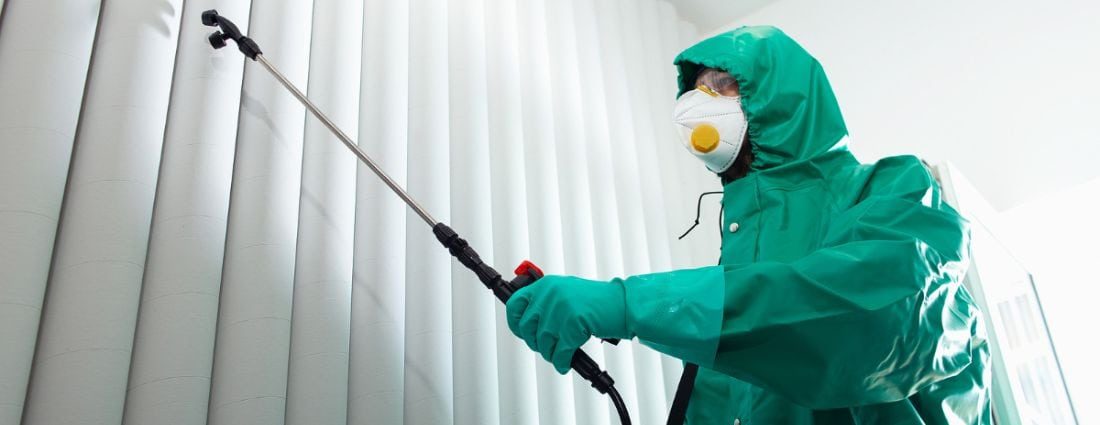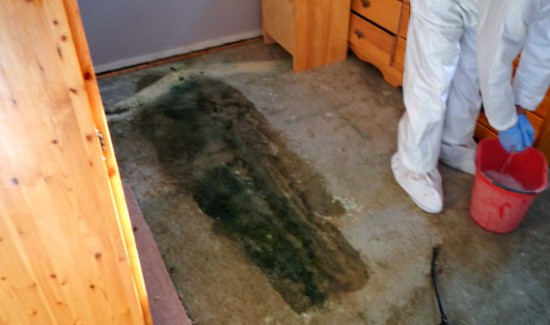Expert Homicide and Suicide Cleanup: Compassionate and Discreet Services
Expert Homicide and Suicide Cleanup: Compassionate and Discreet Services
Blog Article
Specialist Biohazard Cleansing and Purification for Blood, Bodily Fluids, and Hazardous Products
The potential health and wellness risks linked with direct exposure to biohazards underscore the critical requirement for meticulous handling and extensive cleaning. As we browse the detailed landscape of biohazard clean-up, recognizing the subtleties of policies, compliance, and the customized devices at play becomes necessary in making certain a thorough and secure decontamination process.
Health And Wellness Threats of Biohazard Exposure
Exposure to biohazards postures substantial health and wellness risks that can cause serious effects for individuals and neighborhoods alike. Biohazards include a large range of biological compounds, consisting of blood, physical fluids, mold, germs, infections, and various other possibly contagious products. When individuals enter into call with these biohazards, whether via crashes, inappropriate handling, or environmental direct exposure, they face the risk of having significant ailments or conditions.
One of the main health threats connected with biohazard exposure is the transmission of contagious conditions. Bloodborne pathogens such as HIV, liver disease B and C, and various microorganisms can be present in biohazardous products, posing a direct hazard to human health. Inhaling airborne biohazards like mold and mildew spores or coming into call with infected surfaces can additionally bring about respiratory system issues, allergies, and various other unfavorable health and wellness impacts.
Additionally, biohazard direct exposure can have long-lasting wellness effects, with some conditions showing up years after the preliminary get in touch with (Blood Cleanup). As a result, it is critical to focus on appropriate biohazard cleaning and decontamination to mitigate these health risks and make sure the security of areas and individuals

Specialized Training for Biohazard Clean-up
When it pertains to handling biohazard cleanup successfully and safely, specialized training plays an essential function in guaranteeing appropriate decontamination procedures are complied with. Biohazard cleaning requires details understanding and skills to successfully reduce threats related to bloodborne pathogens, bodily fluids, and hazardous products. Specialists learnt biohazard cleanup go through rigorous guideline on just how to securely take care of, get rid of, and take care of biohazardous materials to avoid contamination and exposure.
Specialized training for biohazard cleanup covers a series of essential subjects, including appropriate personal protective equipment (PPE) use, bloodborne pathogen awareness, purification strategies, and contaminated materials disposal protocols. Individuals learnt biohazard cleaning are furnished with the needed experience to assess contamination degrees, determine prospective threats, and execute appropriate cleanup treatments in conformity with governing requirements.
Continual training and education are extremely important in the field of biohazard clean-up to stay updated on the most recent purification technologies, safety protocols, and laws. By spending in specialized training, biohazard clean-up professionals can properly reply to emergency clean-up circumstances and protect both public wellness and the atmosphere.
Value of Appropriate Purification Techniques
Making use of correct decontamination techniques is essential in biohazard cleanup to effectively remove harmful products and minimize wellness threats. Effective decontamination not only ensures the elimination of noticeable traces of blood, physical fluids, and various other biohazards but additionally targets unseen microorganisms that may position serious health and wellness threats if not effectively eliminated. By complying with rigid decontamination procedures, educated specialists can substantially minimize the threat of direct exposure to harmful microbes, infections, and germs that could result in conditions or infections.
Correct purification techniques entail using customized tools and anti-bacterials that are specifically made to neutralize biohazards effectively. Detailed cleansing and disinfection of infected areas are necessary to prevent the spread of pathogens and ensure a secure setting for occupants. Furthermore, the right disposal of biohazardous waste adhering to decontamination procedures is crucial in stopping contamination of various other surfaces or individuals.

Tools and Tools for Safe Clean-up
When dealing with blood, bodily liquids, or harmful products, biohazard cleaning experts count on specialized equipment to lessen direct exposure dangers and extensively sanitize the damaged location. Additionally, biohazard cleansing sets having anti-bacterials, absorptive materials, and biohazard bags are used to safely include and get rid of of polluted items.
Advanced cleaning devices like hospital-grade disinfectants, HEPA-filtered vacuum cleaners, and misting makers are used to sterilize surface areas and remove biohazards effectively. Specialized devices such as sharps containers and biohazard garbage disposal containers are utilized to securely handle sharp objects and biohazardous waste materials. By using the best equipment and tools, biohazard cleaning specialists can make certain an extensive cleaning procedure that prioritizes safety and decreases wellness risks for both employees and occupants of the afflicted space.
Rules and Compliance in Biohazard Cleaning
Correct adherence to policies and conformity standards is vital in biohazard Look At This cleaning to make certain the safety and security of both workers and the atmosphere. Federal government companies such as OSHA (Occupational Safety and Health And Wellness Management) and the EPA (Environmental Security Firm) have established particular standards for biohazard cleanup procedures to minimize health risks and ecological contamination. These guidelines cover a variety of aspects consisting of the handling, transportation, and disposal of biohazardous materials, along with the essential training and protective tools needed for employees associated with the clean-up procedure.
Biohazard cleaning companies should stay current with these guidelines to ensure that their operations fulfill the required safety criteria. Failure to follow these laws can lead to severe effects, including fines, lawsuit, and threatening the health of people and the atmosphere. By following stringent policies and compliance measures, biohazard cleansing firms can efficiently minimize risks and ensure a complete and safe cleanup procedure for all celebrations entailed.
Final Thought
To conclude, biohazard cleaning and decontamination call for customized training, proper techniques, and adherence to regulations. Exposure to blood, physical liquids, and dangerous products presents substantial health and wellness dangers, making it essential to make use of the right tools and devices for secure clean-up. By adhering to strict protocols and standards, specialists can properly mitigate this post the threats related to biohazard exposure and guarantee the safety of both themselves and others.
As we navigate the intricate landscape of biohazard clean-up, comprehending the subtleties of regulations, conformity, and the customized equipment at play ends up being essential in ensuring a safe and extensive purification process. (Blood Cleanup)
When it comes to dealing with biohazard cleaning effectively and safely, specialized training plays a fundamental role in making sure appropriate decontamination procedures are followed.Using proper purification techniques is essential in biohazard cleaning to successfully remove dangerous materials and decrease health risks. In addition, biohazard cleansing packages consisting of disinfectants, absorbing materials, and biohazard bags are made use of to safely dispose and have of infected things.
Federal government companies such as OSHA (Occupational Safety And Security and Health Administration) and the EPA (Environmental Protection Firm) have developed specific visit our website guidelines for biohazard cleaning treatments to reduce health risks and ecological contamination.
Report this page